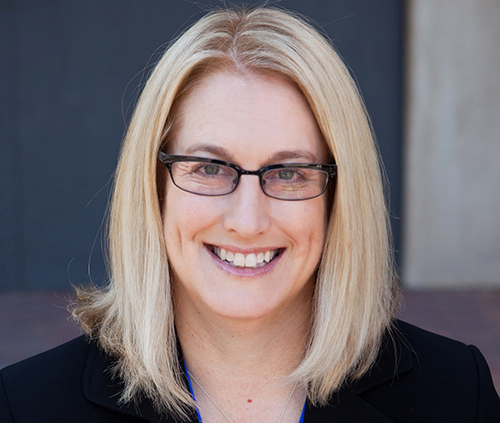What is the technology needed for access to justice?

Mary Juetten
Innovation in the legal field continues to grow at a rapid rate. According to LawSites blog there are nearly 700 legal technology vendors while Stanford’s CodeX Techindex displays 732 companies.
While there have been some debates over the previous year’s numbers, the data shows that the number of legal technology startups at least doubled between 2014 and 2017.
Within a traditional profession like the law, even the words “startup” or “innovation” can be off-putting to a practicing attorney, let alone to a large company’s in-house counsel.
However, the technology needed to solve the broader access to justice crisis that I wrote about here last month does not need to be exclusively legal software. Processes, approaches, and solutions for the law should be informed by other professions and replicated from mainstream businesses.
When researching software development experiences, I was struck by the claim of uniqueness of the legal situation, often referred to as the “special snowflake” challenge. Lawyers seem to want custom solutions to address common problems. Many demand legal-specific software for administrative functions: accounting and timekeeping; project management; calendaring; communications; costing and pricing; and customer relationship management.
The stated rationale is that legal needs are so different that the universal approach will not suffice, even for administrative solutions. The practice of law is still a profession, with business processes and challenges that can be addressed, not just by legal technology, but technology used by accountants, doctors or engineers. For example, project management tools like Asana or Trello work equally well for building capital projects or legal matters.
Unfortunately, this bespoke mindset drives technology companies to develop narrow software solutions which in turn slows down innovation and therefore adoption. Also, these solutions are often expensive for the solo or small- to medium-size firm attorney. This, in turn, drives up the cost for clients.
This customized software problem extends to substantive practice solutions. Lawyers are not inherently risk-takers and want to see a track record before adopting a new technology. The legal technology vertical is flooded with solutions that address niche practice areas and are not yet operating at scale, and are therefore expensive. For example, startup legal packages often cost more than $2,500, a figure that is out of reach for solo entrepreneurs and business owners.
As a result of the law’s slowness to offer affordable legal services, many consumers and businesses have turned to a do-it-yourself approach, supported by technology. However, because of the education gap I discussed last time, consumers often make mistakes using these platforms. Numerous attorneys receive a solid stream of new clients based on errors made using DIY platforms for matters like wills, rental agreements, or incorporation.
We appear to have created a chasm between done-for-you-by-a-lawyer and DIY solutions. The bridge or answer is mobile technology with appropriate legal support. For years, Thomson Reuters’ FindLaw survey has analyzed client behavior. The most recent figures from 2016 consumer survey respondents demonstrate the need for immediate attention from local legal experts using mobile applications.
-
• 71 percent use their smartphones to find a solution to a legal problem.
• 58 percent look for an attorney within a week of their legal incident.
• 45 percent consider legal expertise as top selection factor.
• 78 percent wish to hire a local attorney.
Therefore, clients are demanding mobile applications that provide direct access to a firm. In addition, consumers want education; online questionnaires to gather information rather than in-person consultations; and free legal forms for specific practice areas. Rather than fighting this trend toward creating mobile legal products and services, attorneys can use online information-gathering tools to triage and educate clients and focus on professional judgment for problem-solving.
Firms have made standard forms free, for example Orrick’s Start Forms Library. Also, legal plans have free forms on mobile applications, like LegalShield’s Forms app, which includes more than 15 free forms for common consumer transactions like renting, buying and selling—plus freelance agreements. Taking it a step further, we need to use mainstream technology to create solutions for specific applications within the law. For example, we can utilize chabots to answer frequently asked questions or customizable expert systems for immigration or incorporation questionnaires.
However, it is important to dispel the notion that this mobile approach is not applicable for the population with access-to-justice issues. The most recent Pew Research Center survey of internet and technology use, shows trends that support mobile legal services. Over the last 15 years, internet has exploded, with almost 90 percent of Americans now online. Most importantly, 77 percent of Americans own a smartphone, including 64 percent of lower-income citizens. In addition, a growing number of young adults and low-income households are opting to use their smartphone to access the internet rather than purchasing home broadband. Finally, 51 percent of Americans own a tablet computer, up from just 3 percent in 2010. We can reach those underserved Americans.
Therefore, the statistics above point us to mobile technology and applications for legal services. Solving the access-to-justice challenge with technology will happen once we stop trying to justify why the law is so special. Millions of Americans do not have access to affordable legal services, and focusing on mobile technology for these unmet needs is a critical piece of the solution.
Mary E. Juetten, CA, CPA, JD is founder and CEO of Traklight. In 2015, Mary co-founded Evolve Law, an organization for change and technology adoption in the law. She was named to the ABA’s Legal Technology Resource Center 2016 Women in Legal Tech list and the Fastcase 50 Class of 2016. She is the author of Small Law Firm KPIs: How to Measure Your Way to Greater Profits. She is always looking or success stories where technology has been used to bridge the justice gap, from pro-bono through low-bono to non-traditional legal services delivery. Reach out to her on Twitter @maryjuetten.



